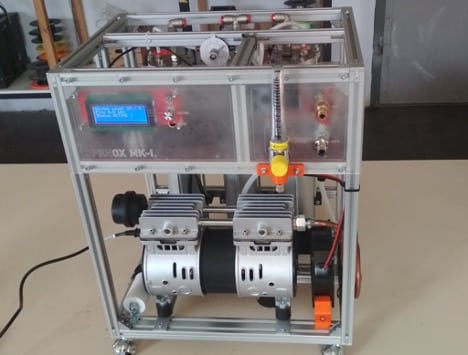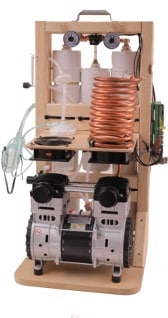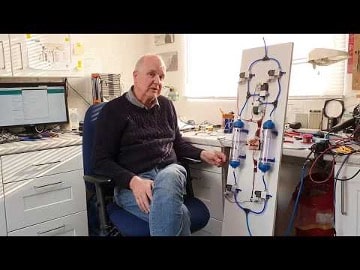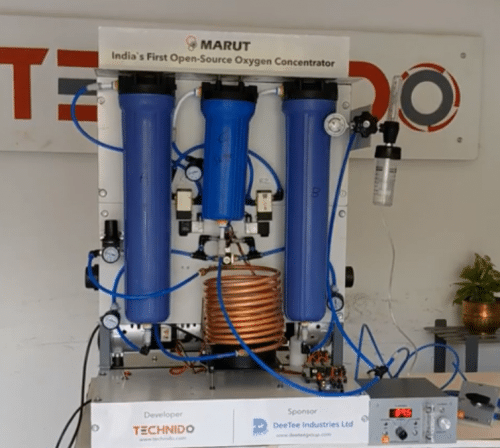With the outbreak of COVID-19 virus, oxygen concentrators have become an important need right now, leading to a surge in demand. While the market failed to maintain the right ratio of demand and supply of oxygen concentrators, the efforts of maker community and open-source design has proved a great boon for people in need of oxygen concentrators, assisting healthcare workers in combating the COVID-19 pandemic. Continuing with the efforts for developing oxygen concentrators to meet their growing shortage, here’s a list of some innovations.
OpenOx
OpenOX is an open-source oxygen concentrator designed to give a maximum oxygen flow of 6 LPM with an oxygen concentration level from 85% to 95% while consuming 580W of power. Its design uses molecular sieve and pressure swing adsorption to produce an output with high oxygen concentration.

For more details, check here
ProjectApollo
The prototype uses 2-litre soda bottles as Zeolites/Silica tanks. The Zeolite tanks absorb certain gases like N2 and CO2. The compressed air is made to pass through the Zeolite beds, which absorb O2 and Ar. The cycle is repeated until there is an increase in oxygen concentration level. The Apollo oxygen concentrator currently generates 5 litres per minute with an oxygen concentration level of around 45%. The team is working to reach a 90% oxygen concentration level.
[signinlocker id=”87626″]
OxiKit
The OxiKit can provide oxygen at a rate of 24 litres per minute with a concentration of 92 %. This open-source oxygen concentrator design uses locally found materials and can be easily made by anyone. Its design also includes Zeolites that absorb the N2 and CO2 from the air. Using a valve and Arduino, the process/cycle of air compression for intake and output is controlled.

Image Courtesy: https://oxikit.com/
For more details, check here
ReapRap

Image courtesy: click here
It consists of a chamber at the bottom. To clean the air, moisture is removed with the help of silica gel. CO2 is removed with the help of activated carbon. Zeolites present in the valves and chamber absorb the atmospheric nitrogen, separating oxygen. After that, the oxygen-enriched air is moved to a constant pressure reservoir and with the help of a rehydrator, the moisture is restored that had been initially removed by silica gel. The opening and closing of valves are controlled by the Arduino microcontroller and a MOSFET.
For more details, check here
Marut

Marut is an Indian-made oxygen concentrator that has been built using the OXIT reference design. The components for this open-source design can be easily found in local markets and hardware shops. The Marut oxygen concentrator uses an air compressor to collect air from the environment and then transfers it to Zeolite canisters. Zeolite helps in separating nitrogen from the air and collects oxygen-enriched air. The current working prototype can provide air having an oxygen concentration of 90% to 92% with a flow rate of 10 LPM. The operating pressure is 30 PSI.
For more details and reference design check here
[/signinlocker]









